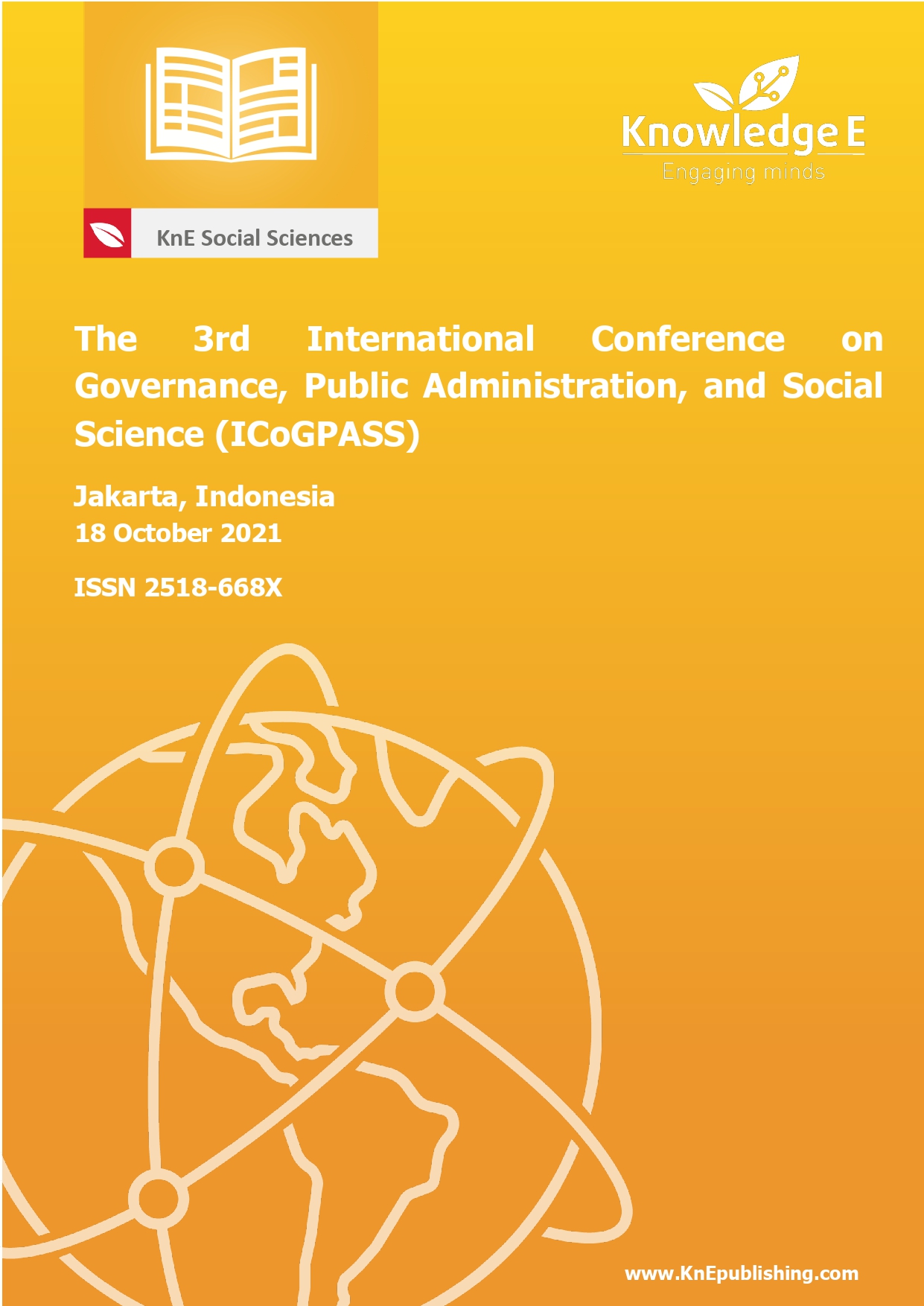Geospatial Artificial Intelligence for Early Detection of Forest and Land Fires
DOI:
https://doi.org/10.18502/kss.v7i9.10947Abstract
Over the years, early detection of forest and land fires has been conducted using hotspot data provided by the National Institute of Aeronautics and Space (LAPAN), based on its interpretation of satellite images. The hotspot data have tremendously helped firefighting efforts and further enforcement. However, the system has several shortcomings, especially due to its inability to distinguish forest and land fires from other hot surfaces or fires caused by common human activities. Furthermore, this method also requires labor-intensive verification, and heavily relies on human factors for advanced analysis and validation. Recently, the DG of Law Enforcement of the Ministry of Environment and Forestry (DGLE MoEF) has been piloting a new approach through advancement in artificial intelligence, called Geospatial Artificial Intelligence (GeoAI). By utilizing recorded satellite image data from 2017 - 2019, the machine has been trained to recognize the pattern and tone of the image in burnt areas so that it can validate the presence of the burnt area based on the history of Sentinel-2 imagery for the past week at each cluster. DGLE MoEF found that the burnt area data processed by GeoAI has better accuracy than the hotspot count for forest and land fire identification. Moreover, GeoAI may ease forest and land fire analysis and verification by automatically overlaying forest area and company concessions at the burnt area. GeoAI’s innovation in forest and land fire monitoring can produce more accurate and complete early detection data of forest and land fires than currently available hotspot data. The results of hotspot clustering that detect fires may assist firefighters in rapidly extinguishing the fire, and support law enforcement officers in determining the appropriate target location. Therefore, GeoAI technology may increase the effectiveness and efficiency of resources allocated by law enforcement officers in providing better and more responsive public services.
Keywords: GeoAI, geospatial technology, artificial intelligence, forest fire, hotspot
References
The World Bank. Laporan pengetahuan lanskap berkelanjutan Indonesia: Kerugian dari kebakaran hutan analisa dampak ekonomi dari krisis kebakaran tahun 2015. Jakarta: Bank Dunia; 2016. Available from: https://openknowledge.worldbank. org/bitstream/handle/10986/23840/Forest%20Fire%20Notes%20-%20Bahasa% 20final%20april%2018.pdf?sequence=6&isAllowed=y
Maryani S. Pengaruh deforestasi dan tingkat kebakaran hutan terhadap tingkat emisi gas rumah kaca. Publikasi Penelitian Terapan dan Kebijakan. 2020;3(2):46- 50. https://doi.org/10.46774/pptk.v3i2.106
Tan ZD, Carrasco LR, Taylor D. Corrigendum to: Spatial correlates of forest and land fires in Indonesia. International Journal of Wildland Fire. 2021;30:732-732. https://doi.org/10.1071/WF20036_CO
Gaveau D, Descals A, Salim M, Sheil D, Sloan S. Refined burned-area mapping protocol using Sentinel-2 data increases estimate of 2019 Indonesian burning. Earth System Science Data. 2021;13(11):5353-5368. https://doi.org/10.5194/essd-2021-113
Hidayat T, Priyatna M, Sutanto A, Al Khudri A, Khomarudin R. Informasi sebaran titik panas berbasis webGIS untuk pemantauan kebakaran hutan dan lahan di Indonesia. Jurnal Teknologi Lingkungan. 2019;20(1):105 112.https://doi.org/10.29122/jtl.v20i1.2961
Pramesti D, Furqon M, Dewi C. Implementasi metode k-medoids clustering untuk pengelompokan data potensi kebakaran hutan/lahan berdasarkan persebaran titik panas (Hotspot). Jurnal Pengembangan Teknologi Informasi dan Ilmu Komputer.2017;1(9):723-732.
Indradjad A, Purwanto J, Sunarmodo W. Analisis tingkat akurasi titik hotspot dari S-NPP VIIRS dan TERRA/AQUA MODIS terhadap kejadian kebakaran. Jurnal Penginderaan Jauh dan Pengolahan Data Citra Digital. 2020;16(1):53-60. http://dx.doi.org/10.30536/j.pjpdcd.2019.v16.a3053
Cath C. Governing artificial intelligence: Ethical, legal and technical opportunities and challenges. Philosophical Transactions of the Royal Society A Journal. 2018;376(2133). https://doi.org/10.1098/rsta.2018.0080
VoPham T, Hart JE, Laden F, Chiang YY. Emerging trends in geospatial artificial intelligence (GeoAI): Potential applications for environmental epidemiology. Environmental Health. 2018;17(1):1-6. https://doi.org/10.1186/s12940-018-0386-x
Kouziokas GN. The application of artificial intelligence in public administration for forecasting high crime risk transportation areas in urban environments. Transportation Research Procedia. 2017;24:467-473. https://doi.org/10.1016/j.trpro.2017.05.083
Li R, Zhou H. Application of artificial intelligence technology in forestry electronic information system. Forest Chemicals Review March-April 2021. 2021:257-267. https://doi.org/10.17762/jfcr.vi.89
Pilling F, Coulton P. Forget the singularity, its mundane artificial intelligence that should be our immediate concern. The Design Journal. 2019;22(1):1135-1146. https://doi.org/10.1080/14606925.2019.1594979
Ahmed KN, Razak TA. A comparative study of different density based spatial clustering algorithms. International Journal of Computer Applications. 2014;99(8):18- 25. https://doi.org/10.5120/17393-7942
Trisminingsih R, Shaztika SS. ST-DBSCAN clustering module in SpagoBI for hotspots distribution in Indonesia. Paper presented at: 3rd International Conference on Information Technology, Computer, and Electrical Engineering; 2016 Oct 19-20; Semarang, Indonesia. Semarang: Institute of Electrical and Electronics Engineers; 2016. https://doi.org/10.1109/ICITACEE.2016.7892465
Llorens R, Sobrino JA, Fernández C, Fernández-Alonso JM, Vega JA. A methodology to estimate forest fires burned areas and burn severity degrees using Sentinel-2 data: Application to the October 2017 fires in the Iberian Peninsula. International Journal of Applied Earth Observation and Geoinformation. 2021;95(102243):1-9. https://doi.org/10.1016/j.jag.2020.102243

